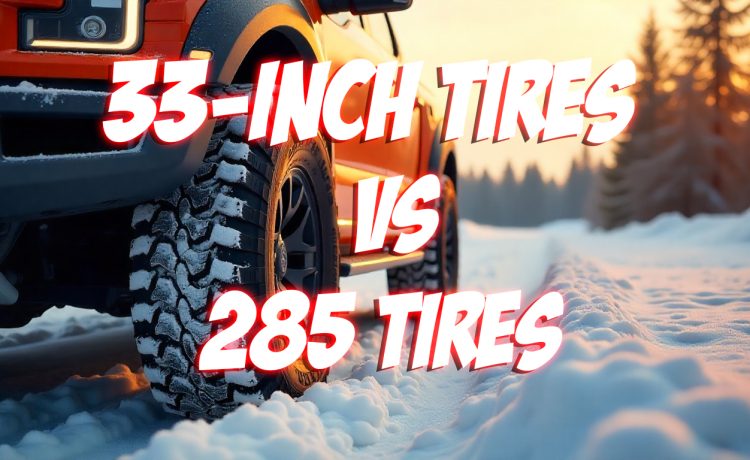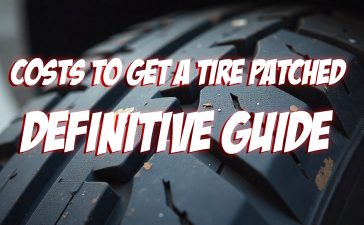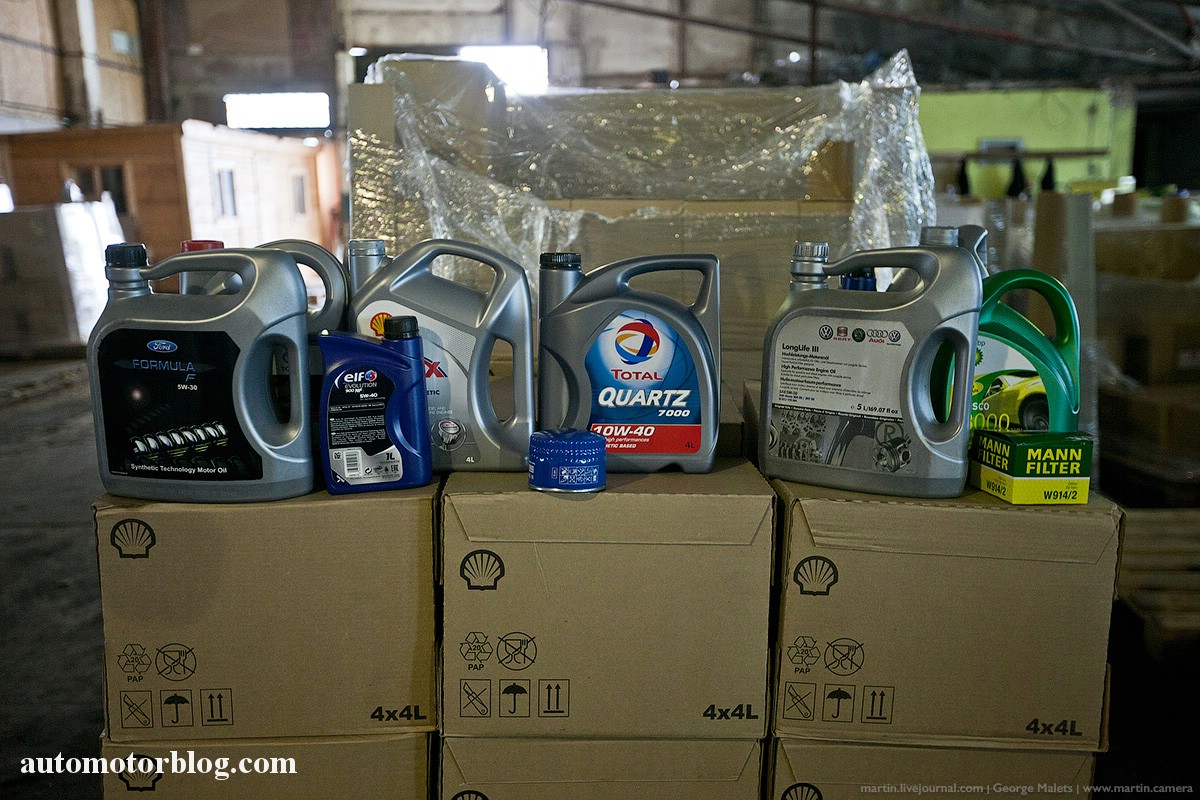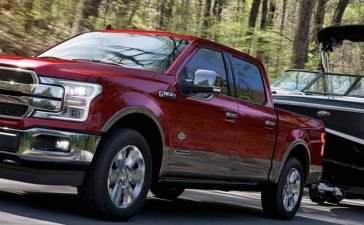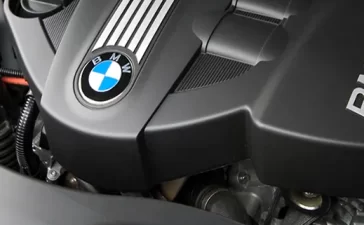A typical question that comes up is whether 33-inch tires and 285 tires are the same. The short answer is NO! In this comparison guide, you will find all the necessary information regarding the difference between the 33-inch tires and the 285 tires. We have covered all the branches for this guide to be complete, such as basic information, tire measurements, tire size comparison, comparison table, pros and cons, off-road vs. daily driving, price comparison, and more.
Table of Contents
Introduction
The concepts of tire sizing and dimensions are difficult for a large number of vehicle owners and enthusiasts to comprehend.
This is not surprising, considering that most of the time measurements made in inches and millimeters are confused, two terms which are used interchangeably in various companies and regions.
285 tires usually measure close to 33 inches, although they aren’t always the same. This depends on the aspect ratio and rim size.
This comparison article will go over the benefits and downsides of 33-inch tires and 285 tires, as well as the differences and similarities between the two. This will help you figure out which one is ideal for your car and driving demands.
A Guide to Tire Measurements: 33-Inch Tires vs. 285 Tires
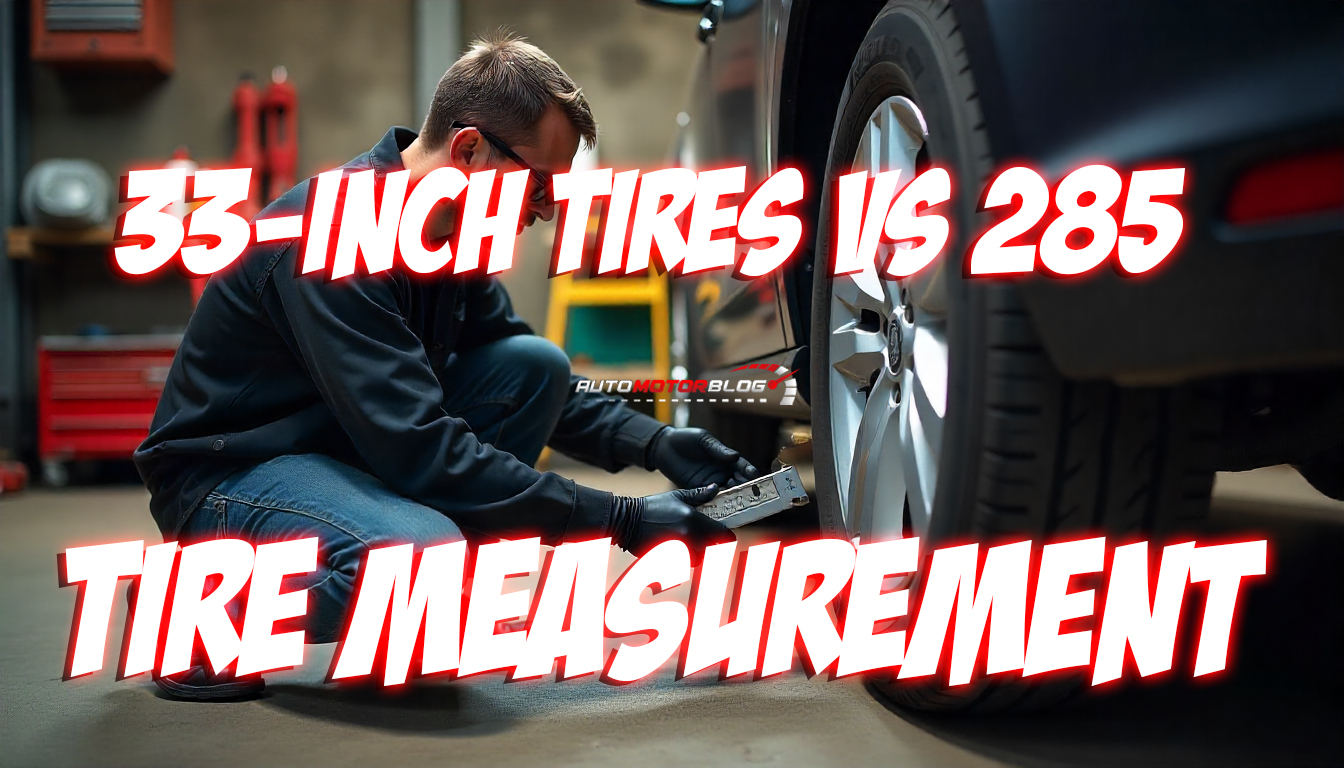
The appropriate tire size cannot be calculated easily because different manufacturers measure it in different ways: metric (millimeters) and imperial (inches). In the situation when the individual states that there are 33 inches in a tire, he describes the overall diameter of the tire, the distance between the floor and the pinnacle of the tread upon inflating the tire.
It is an easy method of describing tire size that is prevalent in the aftermarket and off-road markets. It does not, though, mention the breadth or size of the rim, which may vary under circumstances.
Though the metric system is used in a size of 285/70/R17, and the 285 in this case means the width of the tire, approximately 11.2 inches or 285 mm. The aspect ratio is 70%, and it is the height of the sidewall divided by the width. Finally, R17 implies that the diameter of the rim is 17 inches. Simple, huh?
The height of this tire (285/70/R17 in this case) is approximately 32.7 inches, which is approximately the height of what most individuals would refer to as a 33-inch tire. Do you know what the major difference between these is?
The only major difference is that the 33-inch tires are taller and the 285 tires are wider. This is to say that not all 285 are 33 inches long, and not all 33-inch tires are of the same width.
This distinction is highly significant to consider when purchasing tires in terms of their fit, functionality, and appearance.
The difference between the 285 tire and the 33-inch tire is difficult to distinguish. Other individuals refer to the 33-inch tire as either a 285/70/R17 or a 285/75/R16 tire. What is the reason? It is all some 33 inches in height.
However, the reality is not as complicated as that. The 285 is just a representation of the width of the tire in millimeters. It does not give you any idea about the height. Without knowing the aspect ratio and the rim size, you cannot determine the diameter.
A 33-inch tire is a tire that is 33 inches long due to the diameter. The 285/70R17 has an approximate height of 32.7 inches. It is approximately 11.2 inches wide, and people refer to it as a 33-inch.
A 285/75/R17 is around 33.8 inches tall. It is slightly taller than a 33-inch tire. The height of a 33×12.5/R17 is 33 inches. It is 12.5 inches wide, slightly wider than a 285.
That is why, although there may be a great number of 285 tires called 33s, it does not mean that they are all exactly the same as the 33-inch tire.
Comparison Table
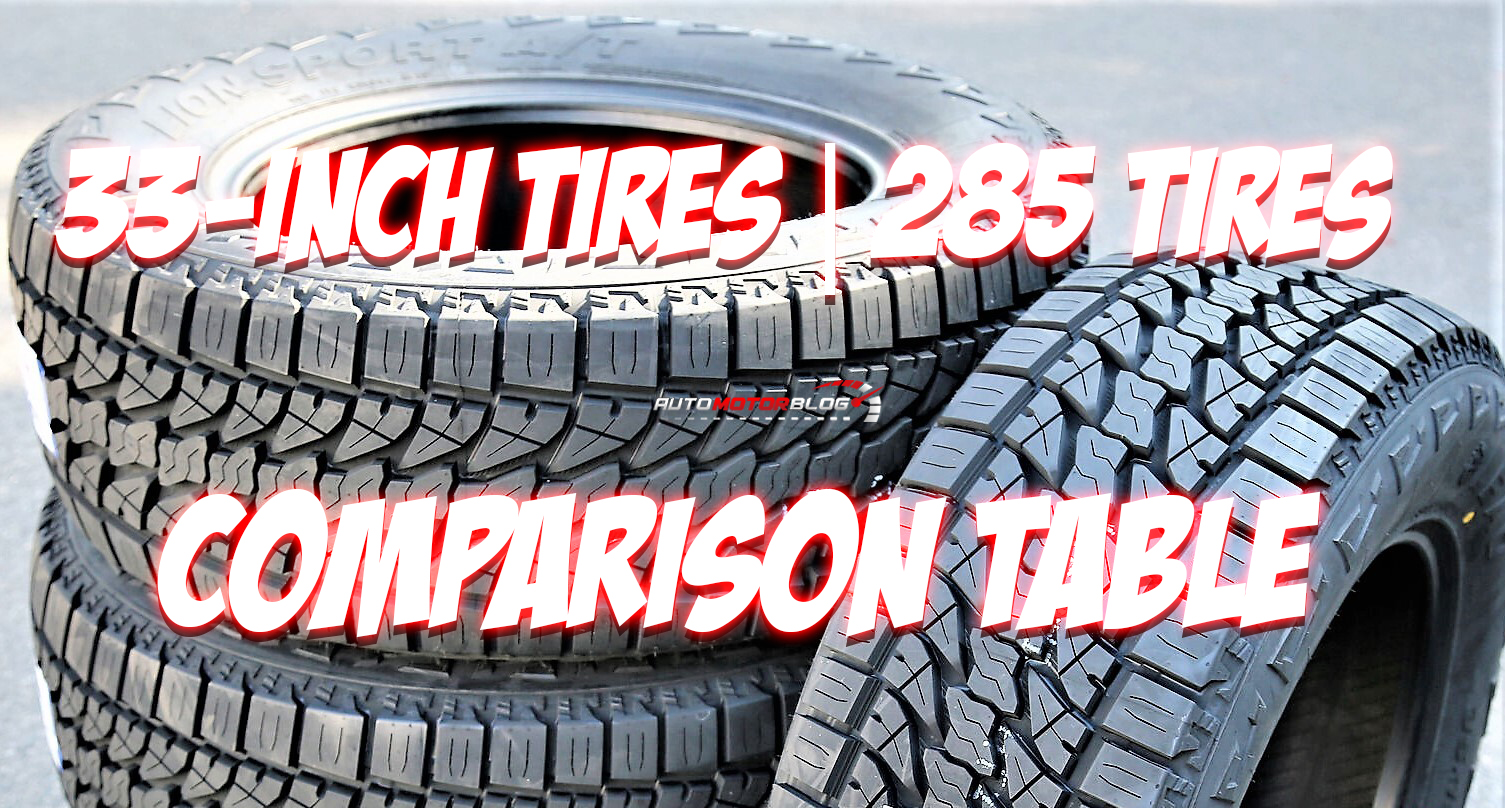
| Comparison | 33-Inch Tires | 285 Tires |
|---|---|---|
| Tire Measurement | Imperial (measurement in inches) | Metric (mm width, aspect ratio, rim size): 285/70R/17 |
| Concentrate | Tire diameter | Tire width |
| Common Equivalent | 33×12.5/R17 | 285/70R/17 (~32.7”) |
| Width Dimensions | between 10.5” and 12.5” | approximately 11.2” |
| Accuracy | Approximate | More accurate |
| Most Used | Off-roading, SUVs (Aftermarket, non-OEM) | Off-roading, SUVs (OEM applications) |
| Price / Set (4 wheels) | $1,100 – $1,700 | $800 – $1,300 |
Pros and Cons
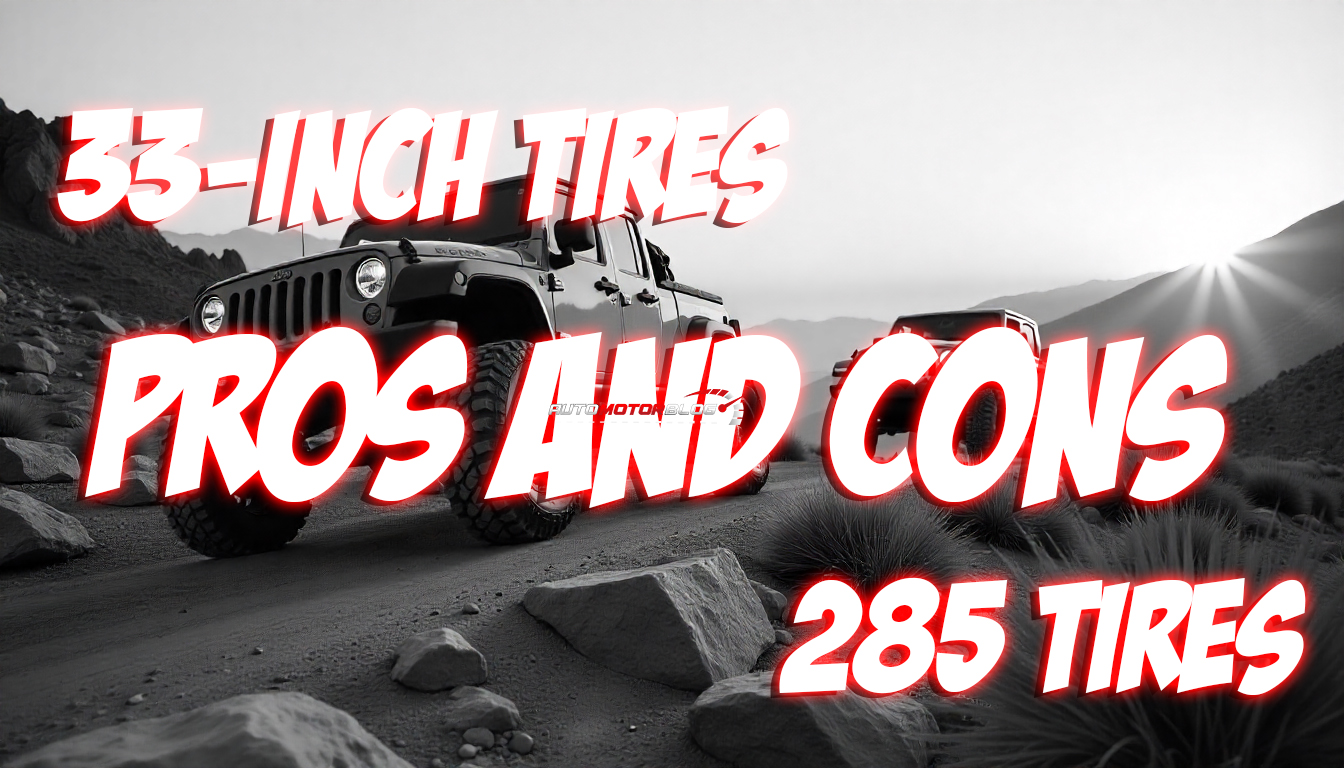
Why does the debate matter? I have spent countless hours on the road comparing the two sizes, and the decision could have an immense impact on your driving experience.
Advantages of 33-inch tires: The bigger wheel has a more commanding look and much more grip on uneven surfaces. Those 33-inch tires embrace the ground when I arrive on a muddy road, making the ride smoother. They also permit a lower gear ratio, that is, they provide more torque at the wheel in off-road conditions.
Advantages of 285 Tires: On the positive side, it is lighter, which reduces the total weight of the vehicle and increases fuel economy. I have also found that there is a distinct change in the acceleration during the time when the truck is loaded. In addition, the reduced profile will be more stable on paved roads, and the braking distance will be reduced.
Disadvantages of 33-inch tires: They weigh more and this may strain the suspension and make it wear out. I have also noticed higher rates of tire changes in the 33-inch pattern, and the bigger diameter is prone to cause a drift in the speedometer unless it has been programmed.
Disadvantages of 285 tires: They are a little too skinny in rock-hard conditions, which causes a more brutal ride. I have almost felt a tip on a bumpy road, which would have been leveled by the broader tires.
Off-Road vs. Daily Driving
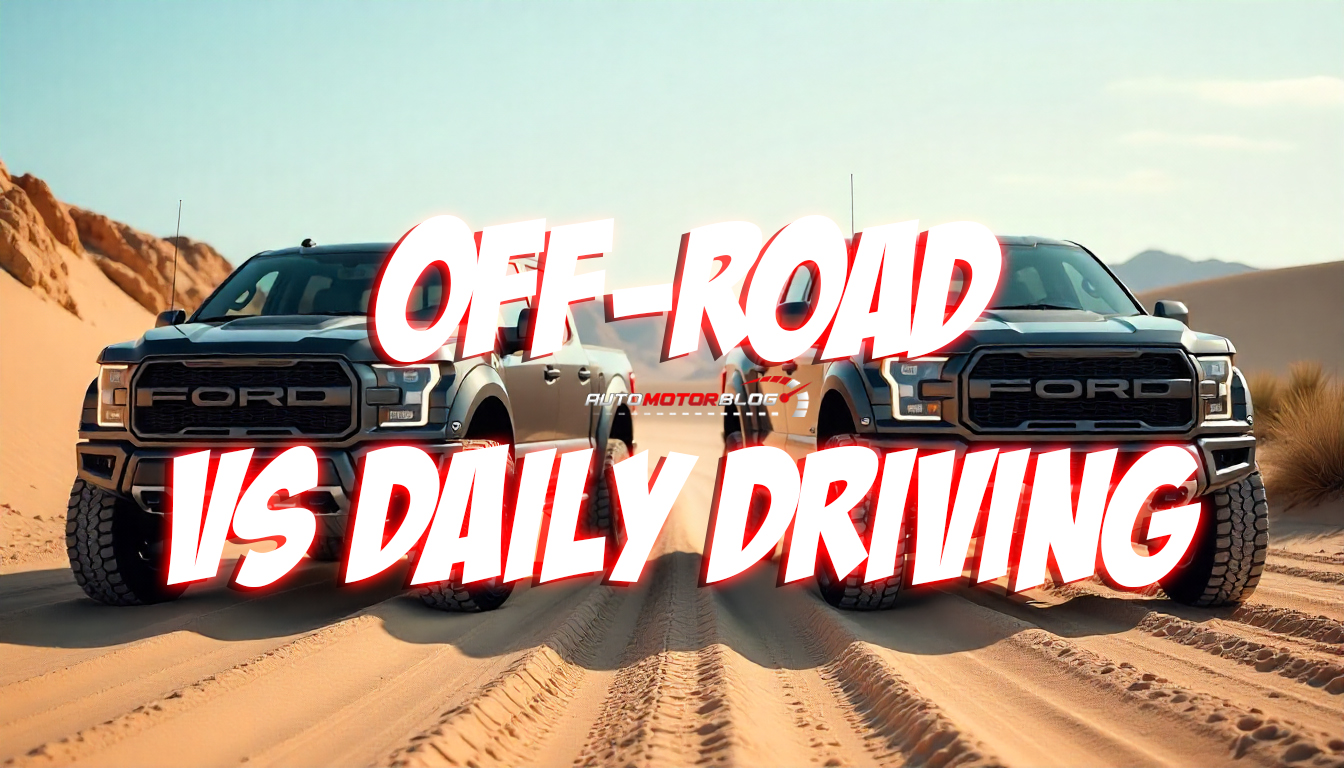
When comparing the two, the 33-inch tires and the 285 tires, the choice of the use of the vehicle is often used to determine the one that should be used.
The actual 33-inch tires, and especially the bigger versions (33×12.5 and bigger), have several advantages when used off-road, such as better ground clearance, more traction in the sand or mud, and a more aggressive demeanor. They are ideal in terms of rock crawling, overlanding or use on the trail where comfort does not matter, durability and size are of higher priority.
These advantages, though, have several trade-offs in the day-to-day commuting. In the case of tires that are larger in size and weight, such as tires with a diameter of 33 inches, the fuel efficiency will probably be lower, and the noise on the road will also be louder.
Moreover, it is also necessary to manipulate the trimming of the tires in some cases or perform some changes in the suspension to prevent rubbing.
Conversely, tires such as the 285/70/R17, which are highly popular, strike a compromise between size and functionality. They are in a similar diameter range as 33s but are narrower and generally lighter, which allows them to be more easily added to stock models, give a better ride on the pavement, and offer better handling and performance. In the case of the drivers, who drive most of the time and just sometimes drive somewhere outside the road, 285s are more likely to make more sense. Conversely, 33s suit better those fans who consider strong off-road performance a greater priority.
Price Comparison
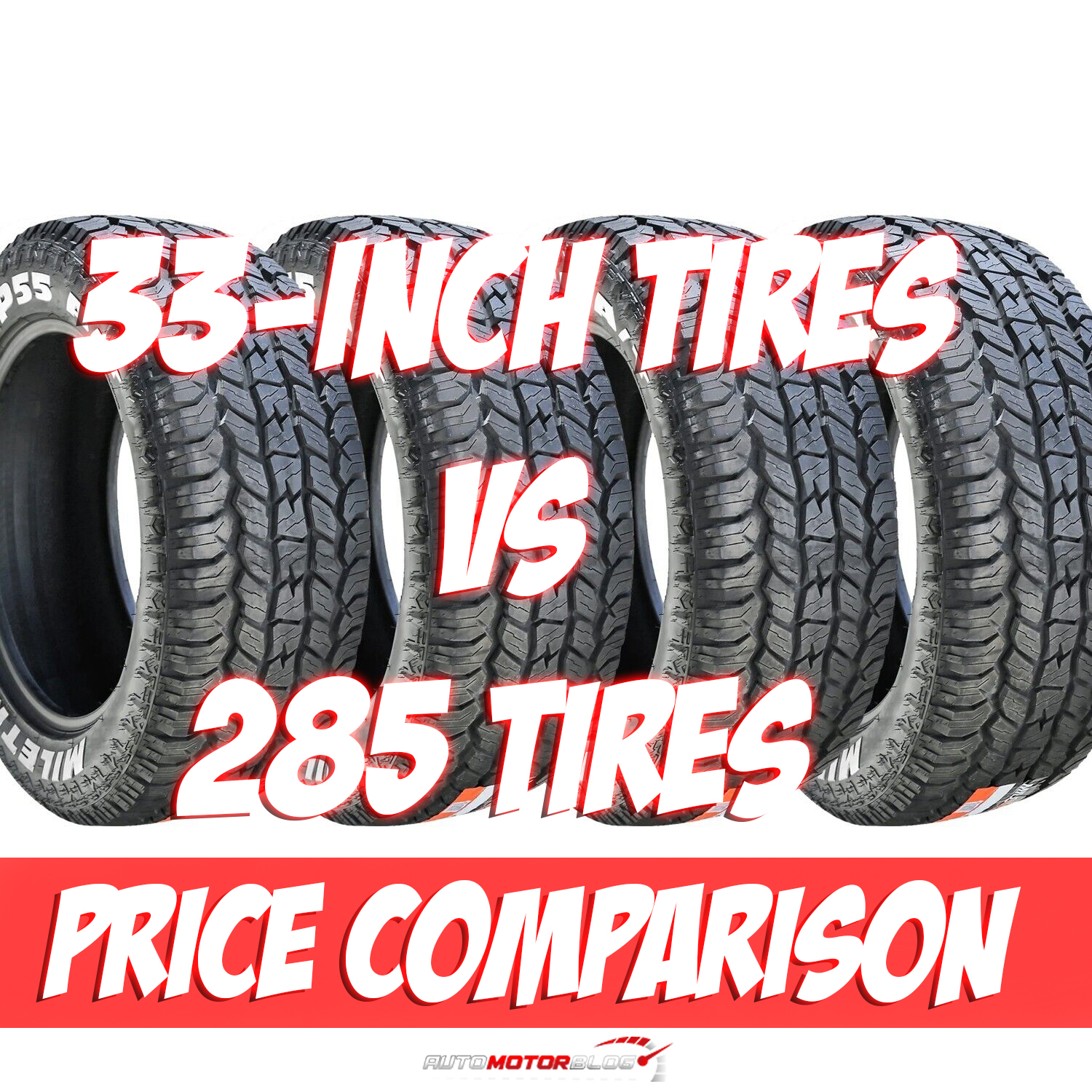
In terms of price, 285 tires tend to be cheaper since they are more in line with the factory standards and made in a larger volume as OEM tires. An average price of 285/70/R17 all-terrain tires is between $800 and $1300, which is determined by the brand and tread pattern.
In comparison, 33-inch tires, and in particular those with wider treads such as 33×12.5/R17, are sold mainly as aftermarket to the off-road community. This tends to increase their cost, costing between $1,100 and $1,700 and above per set.
The added diameter of the majority of 33-inch tires also suggests that the tires may require wider wheels, which will increase the overall cost of an upgrade even more. I would like the aggressive appearance of these tires!
The 285s are usually the cheapest in terms of providing the budget-conscious customers with the looks and performance of bigger tires, the 33s are only famous with those enthusiasts who want the most off-road and aggressive appearance.
I wrote a review about Douglas Tires, and I think it will be useful if you want tires with the best quality/price ratio. They are the perfect tires for daily use on the road.
33-inch Tire vs. 285 Tire: Which One Should You Pick?

To perform off-road, the most appropriate tire is a 33-inch tire, and in particular, the 33×12.5 or even larger. It offers you added clearance in case of rocks, sand, and mud, and its aggressive tread also offers good traction. The cons are obvious: huge tires become heavier, fuel economy decreases, and roads become noisier. When you are willing to spend a little more and spend time in the garage, the 33-inch set is worth considering to be used in rock crawling, overlanding, or long-trail camping, where comfort is not as important as size and durability.
To use on a daily commute and have more fuel efficiency, the 285/70/R17 is the best choice. These tires are slightly narrower and lighter in weight than the 33-inch set of tires. It makes them a bit easier to fit on a stock model without making significant alterations to the suspension. They provide a more comfortable ride on the pavement, better handling, and reduced operating expenses. In case you drive off-road only once or twice a month, the 285s can be a good combination of performance and practicality.
Final Verdict
When you are all about off-road dominance and are willing to pay a little more for maintenance, get the 33-inch tires. The smarter of the two is the 285, in case the first thing on your list is daily commuting and fuel efficiency.
Finally, it is up to what type of terrain you normally ride and how much time you want to spend in the garage.
Frequently Asked Questions
What is meant by the term 33-inch tire?
The overall size of the tire, with the top and bottom of the tread, is measured when it is inflated, and this is 33 inches in diameter. It’s an imperial measurement.
Is a 285 tire necessarily a 33-inch tire?
No. The width of a tire is not the only size of the tire. The diameter is also determined by the aspect ratio (the height of the sidewall as compared to the width) and the rim size. An example is that a 285/70/R17 is nearly 33 inches, whilst a 285/55R17 is much smaller.
Why do tires with a 33-inch height seem taller than those with 285-wide tires?
This is due to their greater overall diameter. Although tires can be of the same width, a 33-inch tire will have a taller sidewall or a bigger rim; thus, it will be raised higher.
What is the overall mechanical distinction between a 33-inch and a 285 tire?
A 33-inch tire tends to be taller and normally wider at the tread. It provides additional ground clearance, but weight is also added.
What is the impact of the additional height on the off-road performance?
Mud or sand would make higher sidewalls bend more, and that would make them more tractionable. They also take bumps and thus give a smooth ride on uneven surfaces.
What are the benefits of a 285 tire over a 33-inch tire?
Weight saving: lighter tires lower the unsprung mass and enhance fuel economy and handling. Paving stability: the decreased profile brings the tire nearer to the rim, producing a firmer steering action and reduced braking ranges.
Price: 285 tires are manufactured in large quantities and are cheaper than 33-inch tires (approximately 800 to 1300 dollars).
What is the disadvantage of 33-inch tires?
Increased weight: This puts more tension on the suspension and may hasten the wearing of tires. Speedometer drift: the bigger circle varies the relationship of the wheel, thus making the odometer and ABS readings incorrect unless the ECU is recalibrated.
Noise/Fuel economy: Taller tires create more noise on the road and lower miles per gallon.
In which cases would I select a 33-inch tire?
A 33-inch tire is best (in particular, a 33×12.5 R17 or bigger) in case of mostly off-road use, rock crawling, overlanding, or heavy cargo requirements.
In what cases would I leave with 285 tires?
Use 285 tires in situations where you need to commute daily, drive on a freeway, or where on-road stability and fuel economy are important to you. It is also less heavy, less expensive, and more appropriate for paved surfaces.
What will be the price of each type?
285/70/R17 all-terrain: $800-1300/set (factory-standard, OEM volume).
33-inch tires (e.g., 33×12.5/R17): $1,100-$1,700/set (aftermarket tires, non-OEM), due to increased cost of production and a small market.
Can a 33-inch tire destroy the suspension of my car?
Only under the condition that the suspension is already at its limits. The additional weight and height exert pressure on shocks, struts, and bushings, though in most off-road designs, the weight is designed to support.
Is a 33-inch tire going to have an impact on the speedometer?
Yes. The speedometer can display a lower speed than the actual one because the circumference of the wheel is different when the ECU is not reset to the new circumference.
Is it possible to use 33-inch and 285 tires in the same vehicle?
It can, but it will result in uneven wear, traction imbalance, and possibly handling. To maximize the performance, apply the tire type to all four wheels.
References
- https://en.wikipedia.org/wiki/Tire
- https://www.crawlpedia.com/tire_size_converter.htm
- https://www.reddit.com/r/tires/comments/1834cv4/please_explain_2_digit_tires_and_3_digit_33s_and/
- https://www.quora.com/Are-33-tires-the-same-as-285
- https://en.wikipedia.org/wiki/Wheel_sizing
- https://en.wikipedia.org/wiki/Metric_system
- https://www.twinkl.com/teaching-wiki/imperial-system


